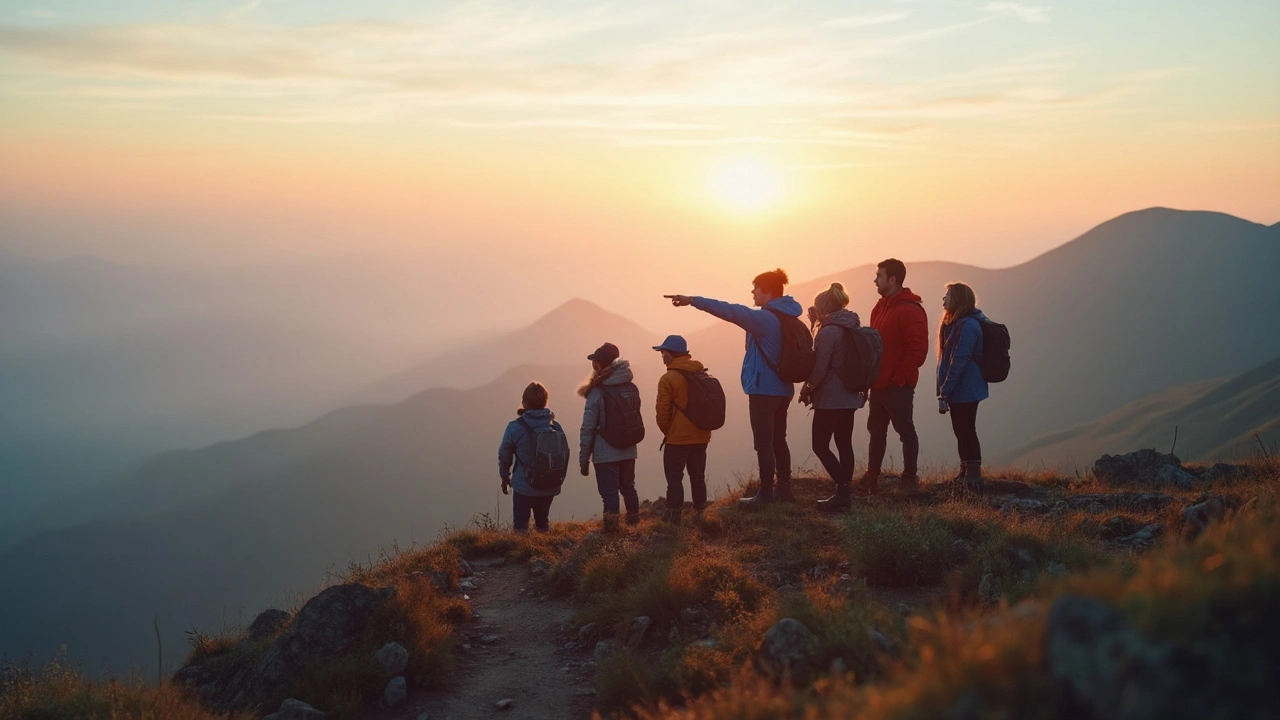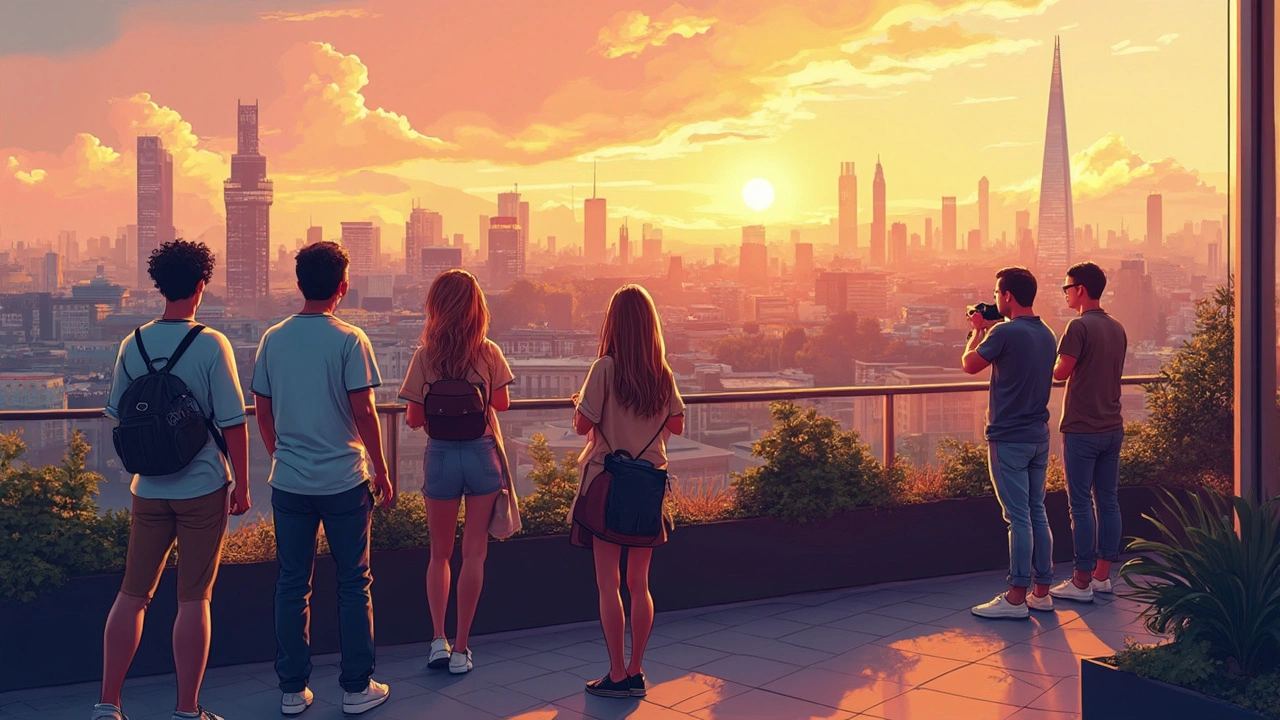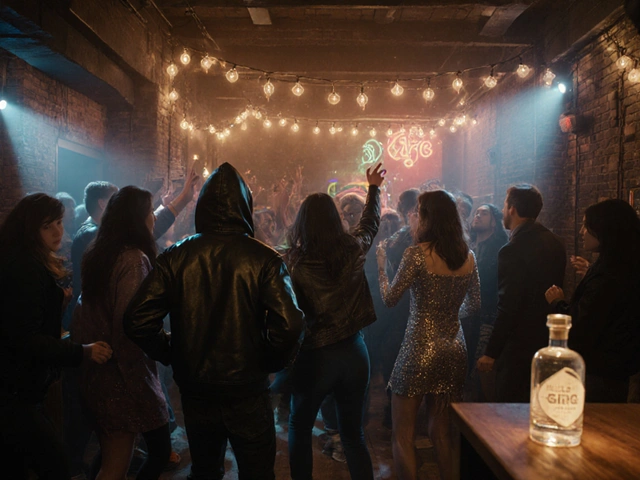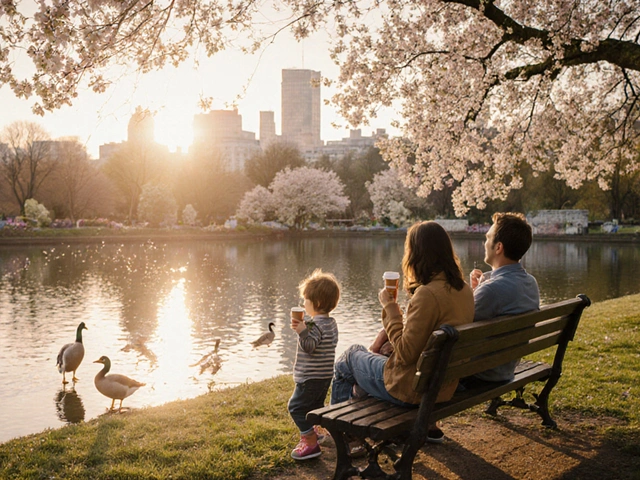
Ever stood somewhere so beautiful, it stopped you in your tracks? Scenic viewpoints have a way of making you forget about everything else—your only job is to take it all in. You don’t need fancy gear or an expert guide for most spots, just a sense of adventure and maybe a bit of patience if there’s a crowd.
If you’re after that feeling—when you finally see a famous skyline light up at sunset or mountains rolling out as far as the eye can see—you’re in the right place. We’ll break down what makes these places so special, how you can find them (even the hidden ones), and give simple tips so you get the most out of every visit. And if you’ve ever wondered why crowds gather at certain view decks or how some people get those jaw-dropping photos from cliff edges or rooftops—don’t worry, there’s a bit of insider know-how coming up, too.
- Quick Facts and Highlights
- What Makes a Great Scenic Viewpoint
- Top Viewpoints Around the World
- Tips for Exploring Scenic Spots
- Safety and Etiquette on the Trail
Quick Facts and Highlights
Looking for a one-stop snapshot of why scenic viewpoints are such a big deal? Here’s what you should know before packing your camera.
- The world’s highest public viewpoint is the Shanghai Tower’s observation deck at 561 meters. That’s about 115 stories up—perfect for the ultimate city sightseeing shot.
- The Grand Canyon’s South Rim draws nearly 5 million visitors a year, making it one of the most popular view spots globally.
- Some of Europe’s best scenic viewpoints can be found right in city centers—like Prague Castle or Montmartre in Paris—where you don’t need hiking boots, just comfy shoes.
- For truly wide-open spaces, Norway’s Trolltunga and New Zealand’s Roys Peak are favorites among hikers and influencers alike.
- Best views aren’t just about mountains—urban rooftops, coastal cliffs, and desert dunes all make the list, so there’s something for every taste.
- More than half of the world’s top viewpoints are accessible by car or public transit—adventure is closer than you think.
| Famous Viewpoint | Continent | Best Time to Visit |
|---|---|---|
| Table Mountain, Cape Town | Africa | Sunset |
| Tokyo Skytree | Asia | Clear evenings |
| Banff’s Lake Louise | North America | Early morning |
| Christ the Redeemer, Rio | South America | Morning |
| Santorini Caldera | Europe | Late afternoon |
One last thing: while taking photos is a must, some of the best memories come from simply soaking it all in. These travel tips and quick stats are your cheat sheet—use them and you’ll always have a good story to bring home.
What Makes a Great Scenic Viewpoint
So, what actually turns a spot into one of the world’s best scenic viewpoints? There’s more to it than just high ground or a nice backdrop. Common factors can make a viewpoint unforgettable or just another stop on your trip.
Location is key. The best viewpoints offer clear, wide views—think of New York’s Top of the Rock or Rio’s Christ the Redeemer. You want a spot where the landscape, city, or ocean stretches out so far, it makes your photos look like postcards. Natural wonders (like Norway's Trolltunga or South Africa’s Table Mountain) and city rooftops (like the Skydeck in Chicago) both have their own unique vibe.
Accessibility matters. If it takes a tough hike or a lift in a glass elevator, getting there should feel like part of the experience but not so hard that it makes you regret going. In fact, about 70% of visitors pick viewpoints that are within a 30-minute walk or drive from tourist centers, just because it fits their schedule and comfort.
| Aspect | Why It Matters |
|---|---|
| Unobstructed View | Let’s face it, trees or buildings blocking your shot kill the vibe. Great viewpoints always give a proper, wide perspective. |
| Safety Features | Railings, signs, and clear paths make it enjoyable for everyone, not just adrenaline junkies. |
| Best Time to Visit | Some places go from average to mind-blowing during sunrise or sunset. For example, Santorini’s Oia or Yosemite’s Glacier Point are famous for their golden hour magic. |
| Facilities | Basic stuff—restrooms, benches, or even a café—makes the trip more comfortable, especially if you’re hanging around for that perfect shot. |
Don’t forget camera angles. The best view spots are set up so you can get creative—framing the view between trees, capturing dramatic drop-offs, or finding a unique point no one else thought of.
If you’re comparing places, remember: an awesome scenic viewpoint isn’t always the highest or most famous. Sometimes it’s just the one with the most “wow” factor for you—maybe it’s the way the city lights come alive after dark or how the clouds hover above a mountain ridge.

Top Viewpoints Around the World
If you love a good backdrop, the world has no shortage of scenic viewpoints that deserve a spot on your best views bucket list. Some are super easy to reach, while others take a little effort, but the payoff is always wow-worthy.
- Grand Canyon, USA: You haven’t seen the word “vast” until you’ve stood on the South Rim. Mather Point is the go-to spot—come at sunrise or sunset for the best light. Pro tip? The crowds thin out at Desert View Watchtower.
- Santorini, Greece: The caldera views from Oia get all the Instagram love for a reason. Head towards the blue-domed churches if you want the iconic postcard shot. Don’t wait for the sunset right on the main walkway—sidestreets give you more elbow room.
- Victoria Peak, Hong Kong: This isn’t just a city skyline—it’s a skyscraper jungle bordered by mountains. The Peak Tram whisks you up, or you can hike the Morning Trail if you want to earn your view. Evening visits give the city that wow factor.
- Machu Picchu, Peru: The classic view from the Guardhouse lets you take in the full Incan site framed by steep mountains. It’s early birds who get the site almost to themselves—those 6 a.m. tickets are worth setting your alarm for.
- Table Mountain, South Africa: Whether you hike or take the cable car, the views over Cape Town and the ocean go on forever. Cloud cover can swoop in though, so always check the weather before you go.
- Banff National Park, Canada: Lake Louise and Moraine Lake win for turquoise water and mountain reflection shots. Go early or late in the day—parking fills up before you’ve had your morning coffee.
- Tokyo Skytree, Japan: If you like cityscapes, the Skytree’s 450-meter-high deck gives you a next-level look at Tokyo. On clear days, you might glimpse Mount Fuji in the distance. Check out the weather cam online before planning your visit.
Not sure when to go? Here’s a quick cheat sheet for visiting these view spots at their best:
| Viewpoint | Best Time to Visit | Fun Fact |
|---|---|---|
| Grand Canyon (Mather Point) | Sunrise/Sunset | Over 5 million visitors a year |
| Santorini (Oia) | Sunset | Blue domes seen in nearly every promo photo |
| Victoria Peak | Evening | Peak Tram opened in 1888 |
| Machu Picchu | Early Morning | Hidden to outsiders until 1911 |
| Table Mountain | Midday (for clear skies) | Cable car spins 360° as you ride |
| Banff (Moraine Lake) | Early Morning | Road opens seasonally for access |
| Tokyo Skytree | Late Afternoon | Tallest tower in the world |
Each sightseeing spot has quirks, from ticketed time slots to weather closures. Plan ahead using official websites or apps—for example, Machu Picchu has daily visitor limits, and Moraine Lake is closed in winter. Bring water and snacks, and double-check opening hours; nothing’s worse than missing your big view because of a mid-day closure.
Tips for Exploring Scenic Spots
Scenic viewpoints are amazing, but it helps to have a plan so you get the best out of the experience. If you’re hunting for the next unforgettable scenic viewpoint, here are some tips I swear by:
- Timing is everything: Crowds tend to show up in the late morning and just before sunset. If you want a more peaceful moment or that wow-factor sunrise photo, show up early, sometimes even before the official park opening. At places like Norway’s Preikestolen or Cape Town’s Table Mountain, pre-dawn arrivals mean space for yourself and better lighting for snaps.
- Weather makes the difference: Cloud cover, fog, or rain can totally change the view. Some spots, like Machu Picchu, look even more magical in the mist, but others, such as New York’s Top of the Rock, really need clear skies. Check a weather app before heading out.
- Pack smart: For mountain or trail viewpoints, always bring water, comfortable shoes, sunscreen, and a jacket—it gets chilly fast in high places. If you’re in an urban spot—say, Tokyo’s SkyTree—carry a power bank for your phone and maybe a pair of binoculars to catch details far away.
- Get your camera ready: The golden hours (just after sunrise or just before sunset) are the best for photos. If you want those epic landscape shots, look for stable ground and hold your phone or camera steady. Don’t be shy to ask someone to take your picture—most people are happy to help, and you don’t want your head blocking the whole Grand Canyon!
- Respect the spot: Lots of scenic viewpoints are protected areas. Stay on paths, don’t climb barriers for photos, and pack out whatever you bring in—nobody wants to find your sandwich wrapper at Cliffs of Moher.
Some popular view spots even track visitor numbers. The Grand Canyon Skywalk, for example, had over one million visitors last year. If crowds aren’t your thing, try lesser-known alternatives—like heading to Horseshoe Bend early in the day or finding rooftop bars in cities instead of the most obvious lookout points. Here’s a quick table to give you ideas for quieter yet stunning viewpoints compared to their busier counterparts:
| Famous Viewpoint | Lesser-Known Alternative |
|---|---|
| Grand Canyon Skywalk | Shoshone Point (Grand Canyon) |
| Table Mountain, Cape Town | Lion's Head, Cape Town |
| Christ the Redeemer, Rio de Janeiro | Dona Marta Lookout |
| Tokyo SkyTree | Bunkyo Civic Center Observation Deck |
Don’t forget, sometimes the best sightseeing happens when you’re off the beaten track. Stay curious and keep an open mind—you never know which hidden view spots will end up being your favorite memory from a whole trip.

Safety and Etiquette on the Trail
Standing at the edge of a scenic viewpoint is amazing, but playing it safe keeps the adventure fun. You’d be surprised how many rescues start with someone slipping off the main path or ignoring signs. It’s not just about keeping yourself out of trouble—there’s a right way to respect the spot and everyone else enjoying it, too.
- Stick to the Trail: Shortcuts can damage the area and put you in danger. Popular spots like Yosemite’s Glacier Point get crowded, but veering off-trail in national parks is a top reason for injuries, according to local rangers.
- Mind the Weather and Light: Mountain viewpoints, especially, can bring surprise rain or fog. Always check a local weather app before you go. And if sunset is your goal, pack a flashlight for the way back—phone lights aren’t always enough.
- Leave No Trace: Trash ruins the view faster than bad weather. Keep snacks in sealable bags, pick up after yourself, and skip feeding wildlife. Even in places with lots of foot traffic, like Trolltunga in Norway, rangers haul out several tons of trash each year—don’t add to it.
- Share the Space: It’s tempting to claim a perfect photo spot, but let others get their shot, too. For super busy scenic viewpoints, like Tokyo’s Shibuya Sky deck, you might even find time limits per person—check ahead and be ready to move on.
- Stay Behind Barriers: Fences and ropes aren’t suggestions. At Horseshoe Bend, Arizona, guardrails went up after a spike in falls in 2018, and, trust me, there’s a reason for every one.
If you’re hiking with friends, keep the group together near tricky turns or steep spots—splitting up leads to missed detours or emergency calls. Carry enough water, especially in hot areas like Grand Canyon’s South Rim (some viewpoints there can top 100°F in the afternoon).
Respecting local customs is part of trail etiquette, too. In places like Machu Picchu, it’s common to greet others on the path with a simple hello or smile.
| Common Trail Mistakes | Potential Consequences |
|---|---|
| Ignoring posted signs | Fines, injuries, restricted area entry |
| Littering at viewpoints | Fines, damaged scenery, harm to wildlife |
| Getting too close to cliff edges | Serious falls, rescue operations |
Being careful and considerate means everyone gets to enjoy these incredible sightseeing and view spots for years to come. Basically, act like the next visitor is you—leave it just as stunning as you found it.







